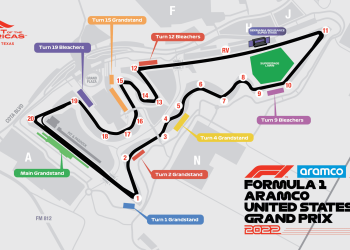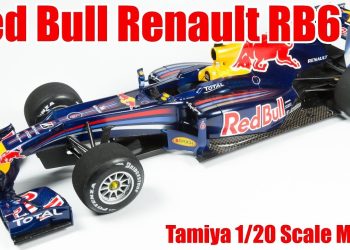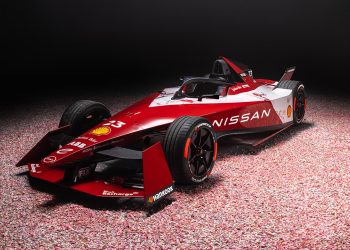The 1946 Formula One season marked a significant turning point in the history of motorsports. After the turmoil of World War II, the global racing community was eager to revitalize the sport, breathing life into a new era of competitive racing. This season wasn’t just about the competition itself; it was a resurgence of passion, technology, and camaraderie among enthusiasts worldwide. Let’s traverse through the events, personalities, and innovations that characterized this groundbreaking year.
The Dawn of Post-War Racing
When the dust of World War II settled, the world craved normalcy, excitement, and a renewed sense of community. The 1946 Formula One season was that beacon of hope. Why, you might ask? Because motorsport was a symbol of technological advancement, national pride, and human spirit. Rewind to those times, and you’d find factories transitioning from military production to crafting engines and chassis for the track.
Interesting Fact: With large-scale manufacturing geared for war, post-war racing benefited from advanced metallurgy and engineering—elements that found their way from the battlefield to the racetrack.
The Tracks and the Atmosphere
Racing circuits became hubs of exhilaration and relief. The Monaco Grand Prix made its return, representing both glamour and challenge. Racing, after all, wasn’t just about speed; it was a mind game. Think of the twists and turns, the tyre-screeching sound reverberating through the narrow streets, and the scent of burnt rubber. Each circuit had its own story—a narrative steeped in culture, local pride, and a bit of mischief.
Did You Know? The 1946 season was initially part of the Grand Prix season; “Formula One” as a championship classification didn’t formally start until 1950.
Pioneers and Personalities
Imagine a world where Enzo Ferrari and Alfa Romeo shaped the future. The 1946 season saw legendary drivers like Tazio Nuvolari and Jean-Pierre Wimille back in action. These drivers were not just competing; they were heroes for many, embodying the epitome of courage and finesse.
Profiles of Legends
Nuvolari, known for his ferocious yet precise driving style, had a charisma that inspired legions. Despite health setbacks, his determination was unyielding. Wimille, on the other hand, was renowned for his tactical intellect on the track, a precursor to the modern strategic racer.
The Mechanics of Speed
Let’s nerd out a little, shall we? The engineering marvels of the era were something to behold. Cars were more than just metal and rubber; they were expressions of ingenuity. The engines were predominantly inline or V-configured, and races were as much about reliability as they were about pace.
Historical Tidbit: Engines of the time necessitated a unique blend of fuel that was patented for optimal performance, an art that was heavily guarded by each team.
Iconic Races and Their Stories
Noteworthy events at tracks like the Circuit des Remparts and Circuito di Modena unfolded dramatic tales of triumph and heartache. These venues were the crucibles where technology met raw human emotion. They were reminiscent of gladiator arenas in a modern sport context, sparking stories that would be told and retold over campfires and dinner tables.
Interesting Tidbit: The race at Circuito di Modena is remembered for its remarkable organizational turnaround, standing testament to the Italian knack for doing the improbable with limited resources.
In the Pits: Logistics and Team Dynamics
Ah, the pit. It was the heart of the operation and often the difference between winning and losing. Pit crews were the unsung heroes whose quick reflexes and strategizing made or broke races. Their synergy and coordination were key, far preceding the digital analytics we depend on today.
- Communication: Before advanced radios, hand signals ruled.
- Tools: A carefully curated tool kit was crucial.
- Roles: Each member had a distinctive, indispensable role.
The Rise of Technology in Racing
It wasn’t just the internal workings of a car that enthralled people. Innovations in safety gear, transportation logistics for the cars, and the beginnings of aerodynamics research marked the decade. This was when the seeds were sown for downforce techniques that dominate the sport’s modern era.
FAQs
Why is the 1946 season historically significant? This season marked the reintroduction of major racing events post-World War II, setting the stage for the structured championships that would follow.
Who were some notable drivers of 1946? Tazio Nuvolari, Jean-Pierre Wimille, and Luigi Villoresi stood out as drivers who not only competed but were instrumental in bringing back the spirit of the sport.
What were the technological advancements notable during 1946? Enhanced fuel mixtures, the transition to post-war metallurgy, and the improvisation in car mechanics such as suspension systems were significant.
How were races organized during 1946? Races leveraged local resources, with circuits often being repurposed roadways or parks, showcasing a unique synergy of improvisation and skill.
Lessons From the 1946 Season
This year wasn’t just a collection of races but a story of revival and resilience. From overcoming the aftermath of global conflict to innovating with limited resources, the 1946 Formula One season exemplifies human spirit and ingenuity pushing boundaries. It’s a chapter in history that reminds us of the transformative power of sport and innovation.
| Feature | Description |
|---|---|
| Engine Types | Inline and V-configurations |
| Circuit Features | Twisting roads, urban layouts |
| Key Drivers | Nuvolari, Wimille, Villoresi |
| Notable Races | Monaco Grand Prix, Circuito di Modena |

Rounding Off
By the way, if ever there was a season that defined resilience, it was 1946. The lessons from that year echo down the lanes of history, reminding us of the potential within adversity. Thank you for sharing this journey through time. Feel free to explore more intriguing stories in our archive.














